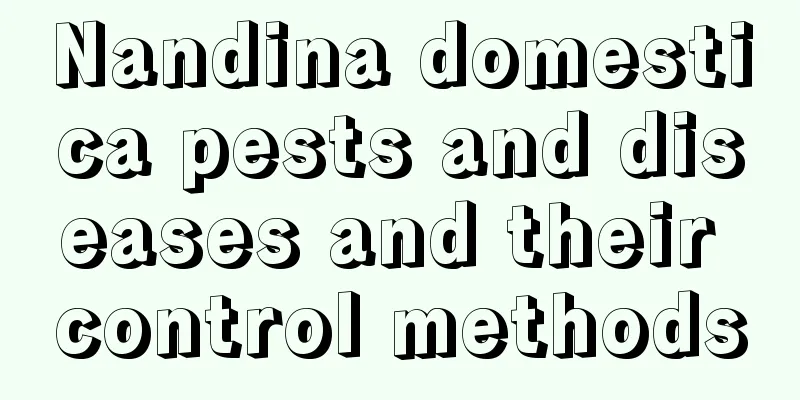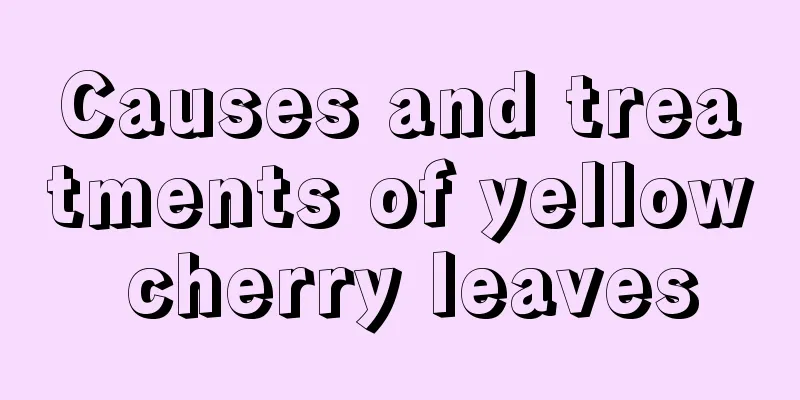Nandina domestica pests and diseases and their control methods

Nandina domestica disease 1: red spot diseasesymptomThe disease mostly occurs at the tip or edge of the leaves. At first, the lesions are brown spots, which then expand to semicircular or wedge-shaped lesions with a diameter of 25 mm to 50 mm. The lesions transition from light brown to dark brown from the center to the outside, with a wider red halo on the outer edge that appears slightly radial. In the later stage of the disease, clusters of sooty lumps will grow on the lesions, and the color is gray-green to dark green. Prevention and treatment methods(1) Remove diseased leaves promptly and bury or burn them. When there are many diseased leaves, you can keep some of the less infected leaves for viewing, and then remove the diseased leaves after the new leaves unfold in the spring of the following year, so as to control the source of the pathogen. (2) Before the onset of spring red spot disease, spray methyl thiophanate wettable powder or mancozeb, or new fungicides, once every 10 to 15 days, for 2 to 3 times in a row. Nandina domestica disease 2: AnthracnoseSymptoms: The disease occurs on the leaves, initially as small brown spots, which gradually expand into spots of various shapes with dark brown edges. When small lesions gather into large lesions, they may even occupy more than half of the area of the leaflet. In the later stage, many small raised black spots will appear on the lesions. When the weather is humid, pink sticky lumps will appear on the small black spots. Prevention and treatment methods(1) Remove diseased leaves promptly and burn or bury them in batches. (2) Spray thiophanate wettable powder during the disease season, once every 10 to 15 days, for 3 times in a row. Nandina domestica pestsLooperLiving habits: Overwinter in the form of pupae in the soil around tree trunks or under rocks, begin to emerge in April to early May of the following spring, and the peak period of emergence is mid-to-late July. Prevention and treatment methods(1) Manual digging of pupae. Carry out this operation in areas with severe insect infestation, in early spring or late fall. (2) Use black light to lure and kill adults during their emergence stage. (3) Spray cypermethrin or trichlorfon before the larvae reach the fourth instar. |
<<: Diseases and Pests of Silk Flower and Their Control
>>: Diseases and pests of cinnabar root (weed seeds) and their control
Recommend
Is the golden banyan tree poisonous? Can it be placed indoors?
Golden Banyan Tree is Poisonous Ficus microcarpa ...
How often should I water the flower?
How often should I water the flower? Generally, t...
How to grow ivy
1. Breeding methods 1. Watering: Ivy prefers to g...
How to plant plum blossoms and precautions (potted cultivation methods for plum blossoms in the north)
Plum blossom is a plant of the genus Prunus in th...
How to plant succulents bought online in winter (Steps to repot succulents bought online)
After getting the succulent, let it adapt to the ...
What are the cultivation methods and precautions for Daphne koreana potted plants?
Introduction of Daphne Daphne belongs to the Thym...
A complete guide to the propagation of Iris
Seed propagation of Iris Iris can be propagated b...
How to sow silverthorn
1. Seed treatment There are many processes to be ...
What kind of trees are suitable for planting in rural courtyards in the north?
The temperature in rural areas in the north is lo...
Is Dancing with the Wind a succulent plant? In which month does it grow fastest?
1. Is Dancing with the Gardenia a succulent plant...
Methods and steps for growing onions on the balcony How to grow onions on the balcony
It is good to plant onions on the balcony. You ca...
Margarite flower cultivation methods and precautions
1. Maintenance methods 1. Temperature: Marguerite...
High-yield cultivation technology of onion
Onion is a vegetable that is easy to grow in high...
How long does it take for rapeseed to germinate after sowing?
How long does it take for rapeseed to germinate? ...
How to manage overwintering shallots?
Winter is a critical stage in the growth cycle of...









